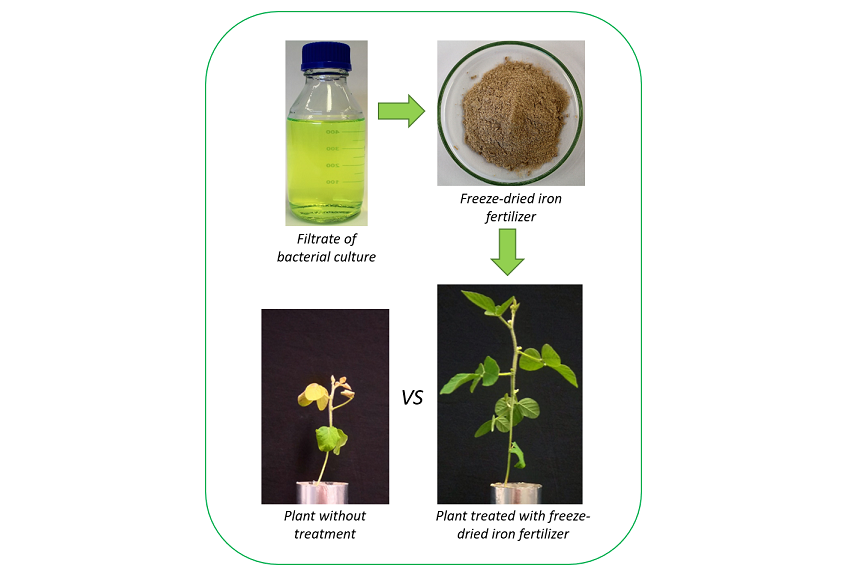
The present invention describes the production and application of a new and green iron fertilizer. The proposed product has the ability of correcting iron-induced chlorosis in crops, namely those grown in calcareous soils. An additional advantage, the bio-based origin of this new green fertilizer eliminates or mitigates the negative environmental risks associated with the current competitors (synthetic iron-chelators), which are nowadays commercialized.
The solution proposes to solve the iron (Fe) deficiency in plants, one of its main causes of chlorosis, which leads to losses in field crops quality and yield. Fe-deficiency is a worldwide problem, particularly sever in calcareous soils, since chlorotic plants produce less biomass, flowers and fruits and ultimately can lead to complete crop failure.
Iron (Fe) deficiency is one of the main causes of chlorosis in plants, which leads to losses in field crops quality and yield. Fe-deficiency is a worldwide problem, particularly sever in calcareous soils (which cover about 30% of the world surface). Chlorotic plants produce less biomass, flowers and fruits and ultimately lead to complete crop failure. The current synthetic iron-chelates used to prevent or correct iron-deficiency are not satisfactory mainly due to its poor biodegradability, which raises environmental concerns.
The present invention proposes to solve these problems through the production and application of a new green iron fertilizer, which has the ability of correcting iron-induced chlorosis in crops, namely in those grown in calcareous soils. As additional advantages, the green-fertilizer has lower environmental risks compared with the current competitors (synthetic iron-chelators), is produced by a natural biotechnological process and has the potential for solving different crop issues in a single all-in-one product.
Present technologies in the same market branch use synthetic iron-chelates to amend iron-induced chlorosis. These synthetic compounds (such as o,o-EDDHA) are not biodegradable, which is a matter of great concern.
This invention departs from the use of synthetic chelates for correcting iron chlorosis in crops. The innovative aspects of the conceived solution are related with: 1) the development of a bio-based product effective for chelating iron under alkaline conditions, which is selective for iron and poses less environmental risks than the traditional synthetic ones applied nowadays; and 2) the production of this bio-based-fertilizer using a biotechnological-based process.
The formulation produced by this invention is addressed to fill the need for new green iron fertilizers. According to industry information, it is estimated that the market size of iron chelates is around 26000 metric tons per year. This new green iron fertilizer targets market segments ranging from very small business to very large enterprises in the area of agriculture.
Besides the great market potential, the main competitors are non-biodegradable synthetic iron chelates, which differ in one fundamental aspect of this invention and are not satisfactory mainly due to the poor biodegradability of these compounds, posing risks that arise from their ability to solubilize heavy metals from soil and sediments, which leads to an increase risk of human and animal exposition to these metals.






